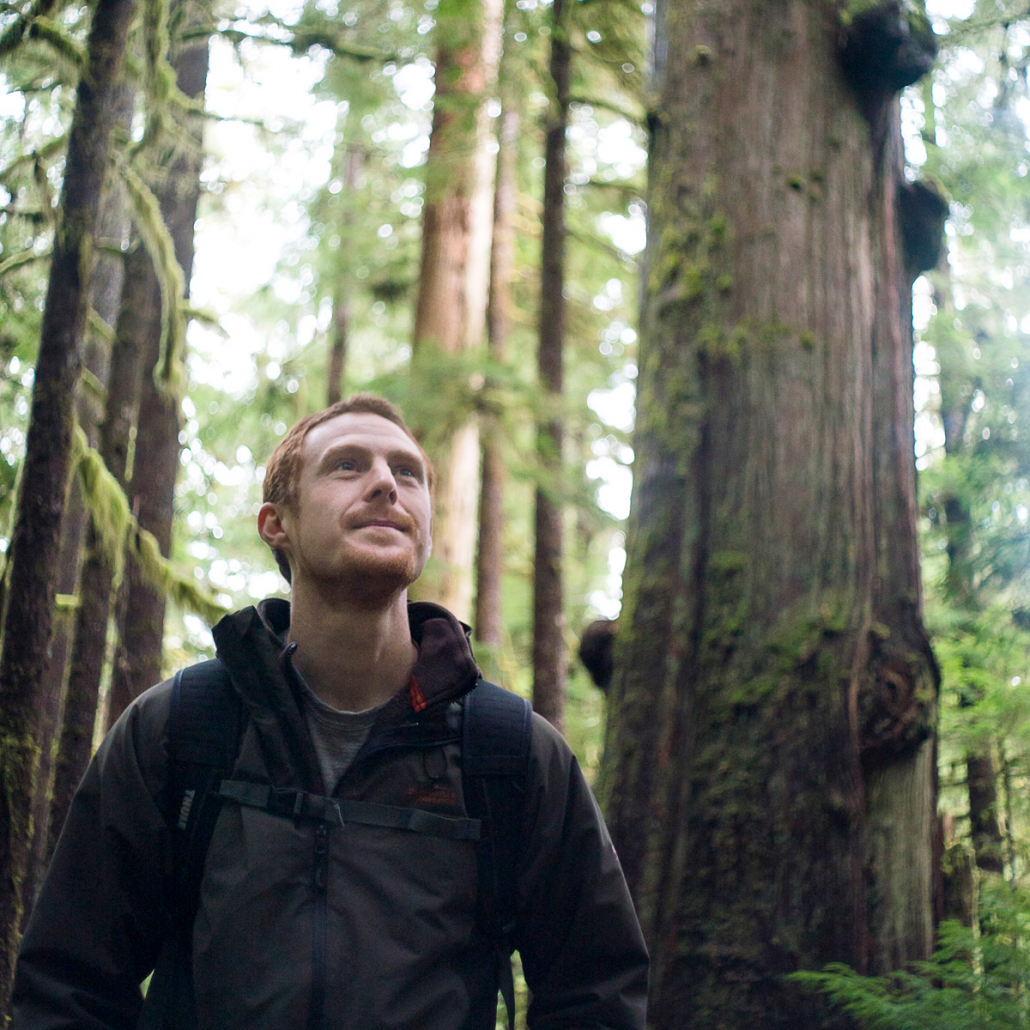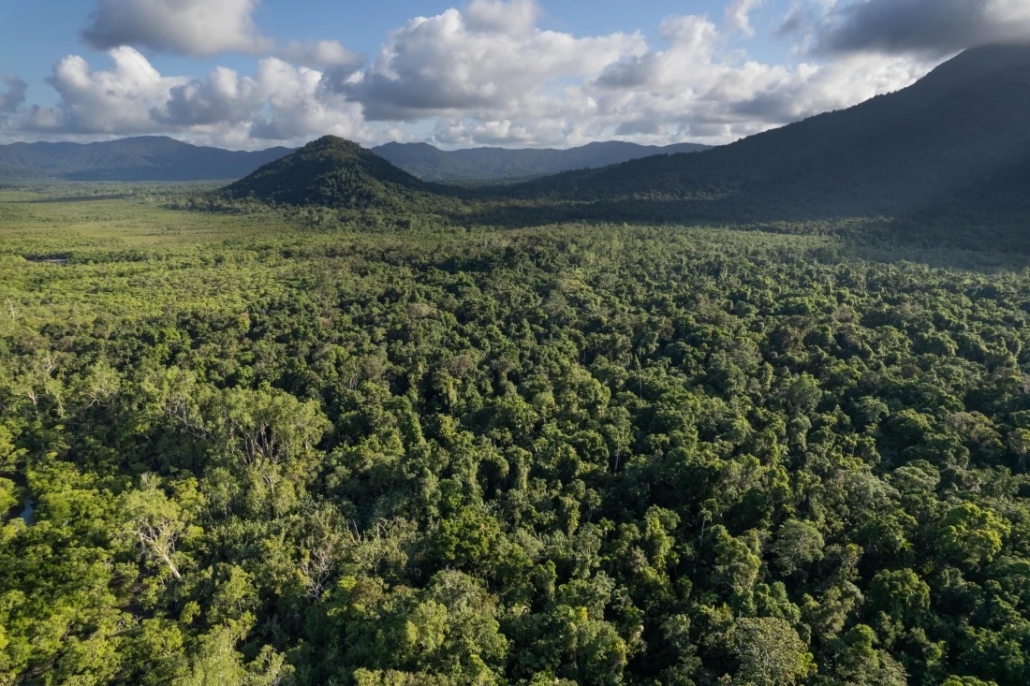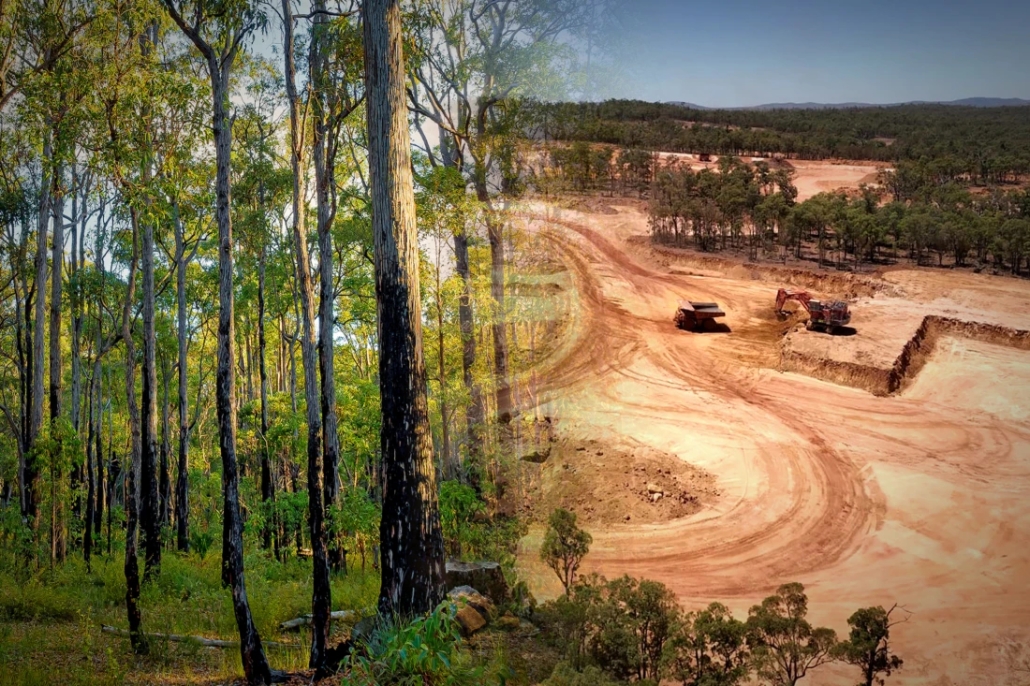 Jun 6 2024
Jun 6 2024Financial Review: Why we should embrace tall-tree tourism
June 4, 2024
By Ute Junker
Australian Financial Review
Original article here.
Only 34 per cent of the world’s surviving forests are old-growth ones, and many are under threat. If California’s Redwood National Park is anything to go by, there is hope, however.
This is a tree that demands attention. Thrusting 70 metres into the sky – about the height of a 20-storey building – the towering Douglas fir has a diameter of almost four metres. That sort of girth doesn’t develop overnight: this specimen has been sinking its roots into the rich earth of Canada’s Vancouver Island for around 1000 years.
There is another reason this tree stands out. It stands alone.
Once sheltered by the old-growth forest that enveloped it on all sides, its sheer verticality is cast into stark relief by the stump-studded scrublands that surround it. Fourteen years ago loggers razed the entire forest save for this one survivor, dubbed Big Lonely Doug. Doug owes his survival to a logging company surveyor who – for reasons unknown – wrapped a ribbon around its massive trunk on which were written the words “Leave tree”.
“Big Lonely Doug represents both incredible beauty and incredible destruction,” says conservation photographer TJ Watt. Describing himself as a “big-tree hunter”, Watt spends much of his time exploring remote parts of Vancouver Island in search of the region’s last arboreal giants.

Photographer and co-founder of the Ancient Forest Alliance, TJ Watt. © TJ Watt
As co-founder of the Ancient Forest Alliance, he has worked for years to protect the region’s oldest trees from logging. Stands of tall trees such as Avatar Grove – identified by activists in 2009 and placed under government protection three years later after a protracted campaign – have become tourist attractions in their own right. Nearby Port Renfrew, formerly a quiet fishing village, now markets itself as the Tall Trees Capital of Canada.
The battle between tourism and logging is not a new one, but the Canadian province of British Columbia is a critical frontline. The temperate rainforests that blanket the province’s Pacific Coast are places of incredible beauty, where soft light filters through the high tree canopy, loamy scents of rich soil rise with every footfall, and the mosses and lichens that blanket most surfaces soften every sound.
They are a vital environment for grizzly and black bears.
These forests, which comprise more than 60 per cent of the province, also play a vital role in combating climate change. Studies have shown the tall trees in old-growth forests are especially effective at sequestering large amounts of carbon. Rainforests are oxygen-rich environments: they cover less than 10 per cent of the world’s land surface yet produce nearly a third of our oxygen.
Only around 30 per cent of the world’s surviving forests are old-growth ones, however, and many are under threat. Across the world, communities are turning to tourism as a way to protect these precious landscapes. The success of these projects is not only vital for local communities – in British Columbia’s case, predominantly First Nations people – but also for the health of our planet.
British Columbia’s government recognises that its forests draw tourists. Tall trees feature prominently on the province’s tourism website, along with the slogan “Super, Natural British Columbia”. But Watt says a bigger commitment is needed.
“If the B.C. government got on board and improved the signage and roads, and did some more promotion, you would see such an incredible boom. We could be like the redwoods of Canada – that’s a dream of mine.”

A hiker admires an ancient red cedar tree in the unprotected Eden Grove near Port Renfrew, BC. © TJ Watt
South of the border with British Columbia, the redwood forests of northern California are home to sequoias and Douglas firs that stand up to 100 metres tall. They are proven money-spinners. The US National Parks Service reports that in 2022, 458,400 visitors to Redwood National Park spent around $US31 million and sustained more than 400 jobs.
Different countries take different approaches to marketing their old-growth forests. In Waipoua on New Zealand’s North Island, the emphasis is on particularly mighty specimens such as Tāne Mahuta, the king of the forest. The largest kauri tree in the country, Tāne Mahuta stands over 51 metres tall, with a girth of almost 14 metres.
On the Kii Peninsula on Japan’s Honshu island, where pilgrims have followed the Kumano Kodo trail through shady forests for more than a thousand years, the experience is as much about communing with culture as it is about marvelling at nature.

A hiker looks up to the lofty tree tops in the Milkshake Hills Forest Reserve in Tasmania’s Tarkine Rainforest. Alice Hansen
An increasing attraction for some visitors are the wellness benefits associated with spending time among tall trees. Study after study has indicated that immersion in nature can improve everything from heart health to emotional wellbeing, and help stave off cognitive decline.
“There are so many physical and mental health benefits from going to these ancient natural places, embedding a little natural code in people who are usually living in busy urban environments,” says Mark Olsen, chief executive of Tourism Tropical North Queensland.
Olsen is intimately involved with Australia’s most successful tall-tree tourist destination, the Daintree Rainforest. One of the oldest rainforests in the world, listed as a World Heritage site since 1988, the Daintree’s flora is as remarkable as the region’s cassowaries and tree kangaroos.
Twelve of the planet’s 19 families of primitive flowering plants are found here, including 50 species rarely seen anywhere else. The Daintree is also home to the world’s tallest conifer, the bull kauri, which can grow up to 50 metres in height.
Since 2019, the park has been jointly managed by the Jabalbina Yalanji Aboriginal Corporation and the Queensland Parks and Wildlife Service, and the cultural knowledge of the Eastern Juku Yulanji people is now a key part of the tourist offering.
Being introduced to the landscape by an Indigenous guide changes your perspective, says Olsen. “You no longer see a wall of green. You see a cultural landscape.”
Just as in British Columbia, Australian Indigenous communities are benefiting from tourism. “They get to look after Country, to stay on Country, to teach the language connected to that landscape. It’s about the inseparability of story and place,” Olsen says.

The Daintree Rainforest is a precious resource. Jason South
The Daintree may be a success story but elsewhere in Australia, “irreplaceable” tall-tree forests remain at risk, says Amelia Young, the Wilderness Society’s director of national campaigns. “Because of our evolutionary history, these forests are unlike those found anywhere else on Earth. There are so few left, [yet] they are incredibly significant for biological and cultural reasons.”
These forests include the jarrah trees in Western Australia’s southwest, which are “still subject to deforestation, principally for bauxite mining”; the mountain ash forests of Victoria’s Central Highlands region; and, of course, Tasmania’s old-growth forests.

Alcoa bauxite mining operations in an area that was once jarrah forest in Western Australia. Getty/Nine News
Last year The Wilderness Society released its Big Tree State report showcasing eight potential sites for tall-tree tourism in the Huon, Styx and Tyenna valleys. It estimated that an initial investment of $745,000 would generate 139,000 visitor days and $20.2 million in revenue for regional communities.
Tasmania’s government has since promised to introduce new protections for tall trees, but Young says this is only part of the solution. “We also need to protect younger forests so they can become old forests.”
Of course, forest tourism brings its own challenges. In California’s Redwood National Park two years ago, the National Parks Service was forced to close off an area around Hyperion, spruiked as the tallest tree in the world. Trespassers face a $US5000 fine ($7500) and six months in prison.
Even though the National Park Service had kept quiet about the exact location of the soaring redwood – at 115 metres, it is taller than the Statue of Liberty – so many people had found their way there that the ground around its base had eroded, potentially endangering its roots.
Wilderness areas require particular protections, says Dr Susanne Etti, the global environmental impact manager for Intrepid Travel. The company hosts multi-day treks in Tasmania’s Tarkine Rainforest, and has implemented protective measures there ranging from waste-removal processes to managing contaminants.
“Our leaders are very clear about the dangers of contamination from pathogens,” she says. “Cleaning your boots at the start of a trip must be second nature.”

Clayoquot Wilderness Lodge is literally embraced by the forest.
Luxury tourism operators are also finding ways to ‘immerse’ their guests in landscapes that remain relatively untouched. At Clayoquot Wilderness Resort, an exclusive wilderness camp on Vancouver Island’s wild west coast, room rates start at $CA2900 ($3190) a night.
General manager Sarah Cruise says she sees a physical change in travellers during their stay: “You watch your guests come in drained, and see them filling up on green.” The effect of being surrounded by these towering trees fulfils our deepest needs as a species, she adds.
Gesturing to the forest outside her office, Cruise says: “This is our home, this is where we belong – we just don’t know it.”





